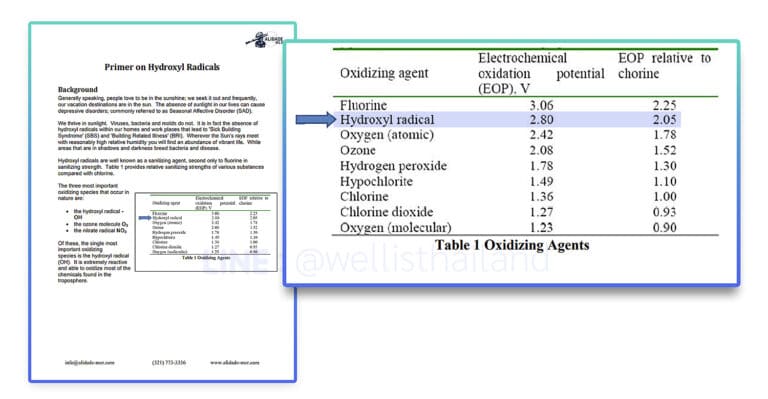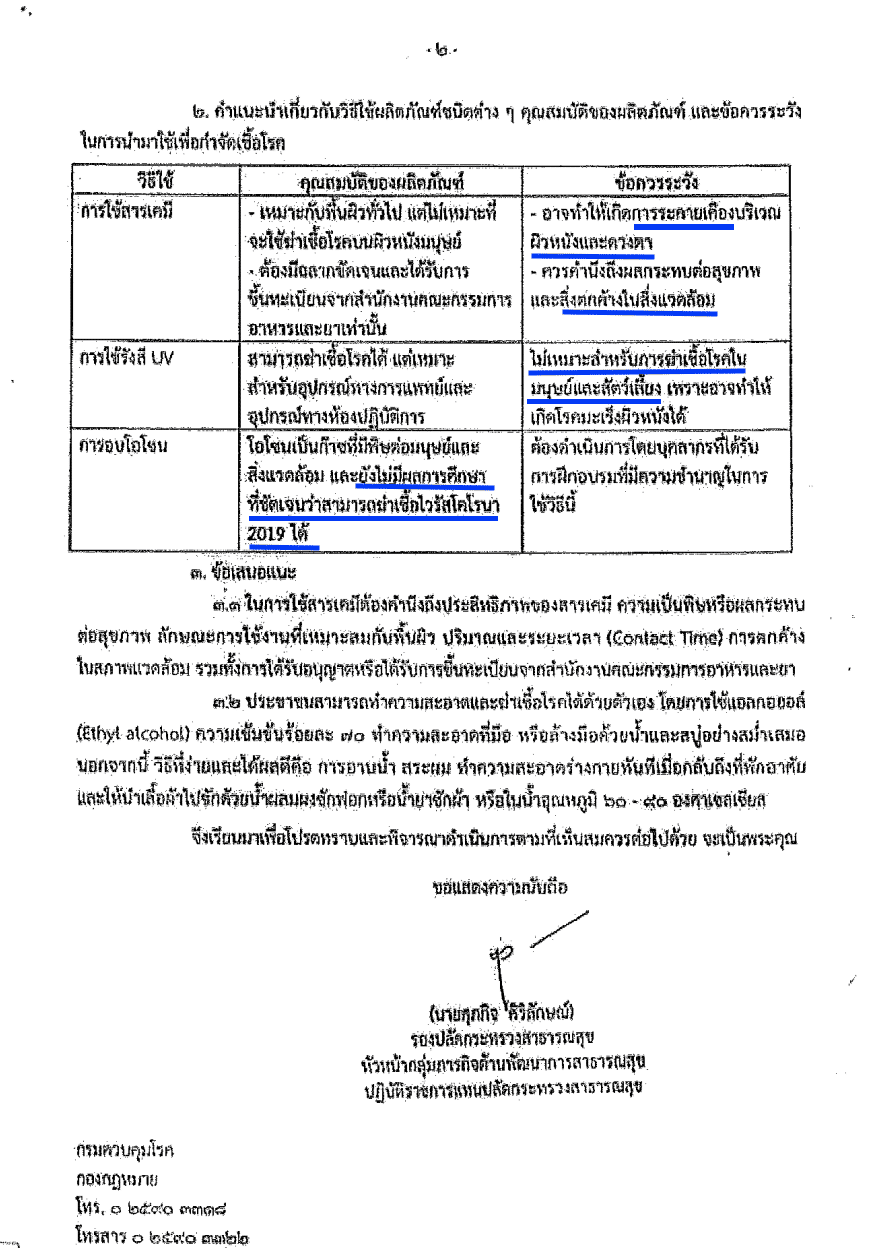Hydroxyl Ions, natural detergent produced by natural process
The video shows a model of air disinfection and toxin removal by hydroxyl ions (OH-). Hydroxyl extracts hydrogen particles from proteins that envelop the germ’s outer tissue, giving out water into the air. Germs decay to death.
What is a hydroxyl charge (OH-)?
- Hydroxyl ion is made up of sunlight and ozone and water in the air. (formed by combining one molecule of oxygen (O1) and one molecule of hydrogen (H1) in the form of plasma to form OH-)
- It is found mostly in the atmosphere, and evergreen forests, but very rarely in the air at the Earth’s surface.
- Nature uses hydroxyl ions to kill germs, and remove greenhouse gases (methane CH4) and toxic gases such as nitrous oxide (NOx). It has earned its nickname as “Natural Detergent” (a cleaner of the sun’s atmosphere).
Hydroxyl can be produced in a variety of ways, but Wellis Air produces the ions from an Olefin cartridge (extracted from organic citrus peels from California) up to 8,000,000-10,000,000 /cc., compared to the number nature produces, which is only up to 200,000 – 8,000.000 / cc.
Hydroxyl Ions (OH-) kill germs and remove toxins better than any other disinfection method on the market.
- Hydroxyl is classified as an oxidizing agent or a disinfectant with the second-highest concentration after fluorine. It outperforms ozone (4th), hydrogen peroxide (used in operation rooms) (5th), and chlorine (7th)
- Although fluorine is the best disinfectant, it is practically not used as a direct disinfectant because it is very dangerous to the human body. However, it can only be used as a small ingredient in various products such as toothpaste, swimming pool water, etc.
- Ozone is a poisonous gas and hydrogen peroxide contains vapors that damage the tissues of the respiratory organs.

The figure shows a comparison of the disinfection concentration of hydroxyl (2nd), which is higher than that of ozone (4th) and hydrogen peroxide (antiseptic) (5th)
Other popular disinfection options such as UVC lamps, also pose dangers to users such as the risk of skin cancer, eyes, etc. In addition, UVC lamps, ozone generators, disinfectants, such as hydrogen peroxide, cause additional costs such as hiring a specialist to operate and maintain the equipment and are limited to various usage restrictions.

(Reference: Warning notice for the use of UVC lamps, ozone generators, and disinfectants by the Department of Disease Control, announced on June 10, 2020). Click here to read the full version>
The 2C disinfection principle states that good disinfection that reduces the spread of infection requires a concentrated disinfectant (1st C) and the disinfection must be conducted continuously (2nd C).
The 2C disinfection principle states that good disinfection that reduces the spread of infection requires a concentrated disinfectant (1st C) and the disinfection must be conducted continuously (2nd C).
- Researchers conducted an experiment to prove this principle by spraying hydrogen peroxide (a disinfectant used in operating rooms) onto the germs in the test tray. The results showed that 99% of the germs were dead. After that, the room was closed and left for 1 night without spraying the substance again during that period. As a result, the next day, the same number of germs returned. This reflects the importance of continuous disinfection to inhibit the growth of pathogens.
- Therefore, other disinfection options such as UVC lamps, ozone generators, and other disinfectants can’t reduce the risk of infection as much because they cannot be used for disinfection continuously while people are gathering, which is a high chance that germs spread easily) and they are harmful to people when touching them.
